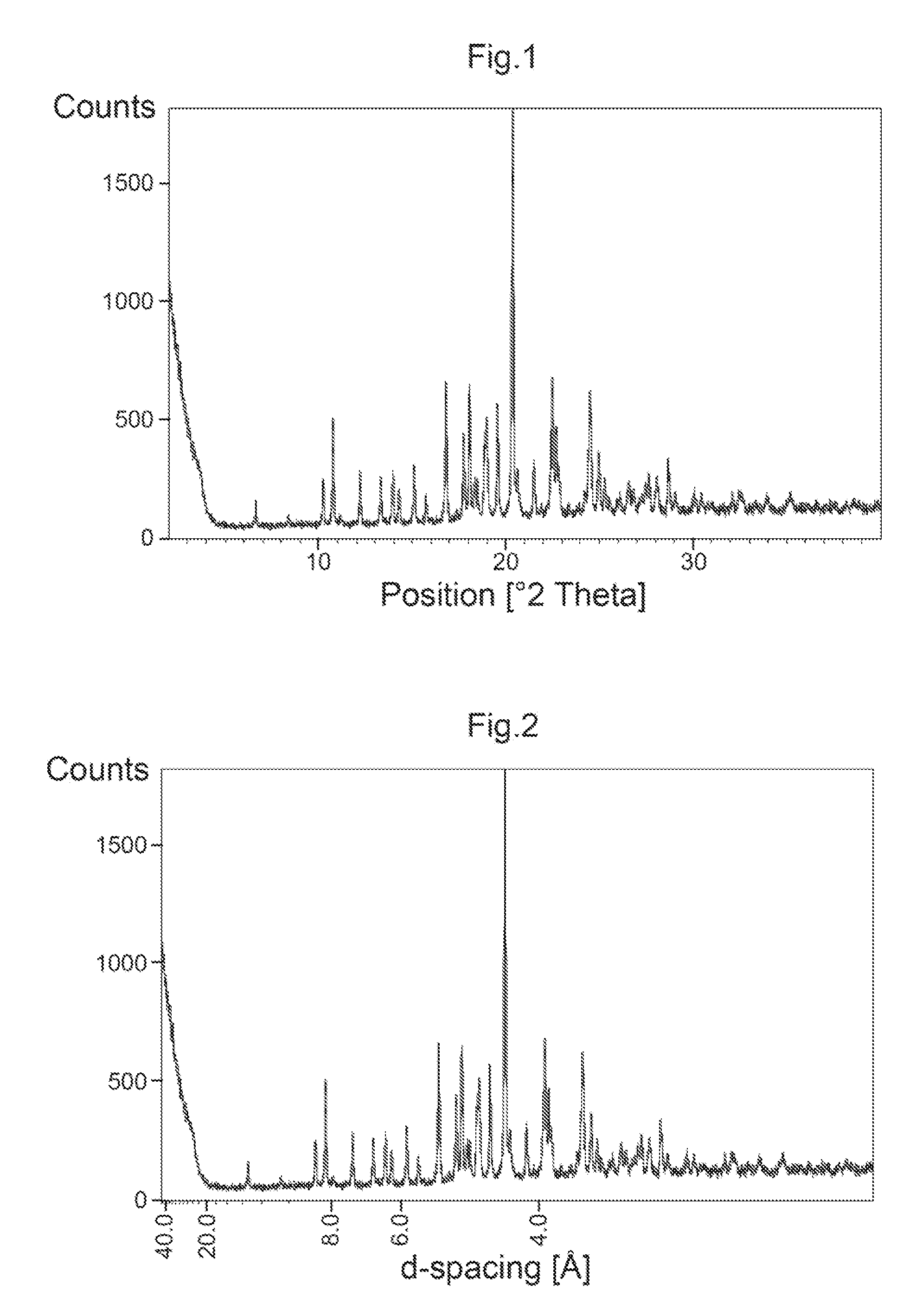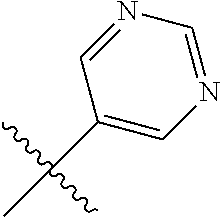Hemifumarate salt
a technology of hemifumarate salt and hemifumarate, which is applied in the direction of drug composition, biocide, extracellular fluid disorder, etc., can solve the problems of high prevalence of alzheimer's disease in this population, disease becomes a greater and greater problem,
- Summary
- Abstract
- Description
- Claims
- Application Information
AI Technical Summary
Problems solved by technology
Method used
Image
Examples
example 1
Preparation of 3-fluoro-2-cyanophenyl (2-(difluoromethyl)pyridin-4-yl) ketone
[0070]In vessel 1,2-difluoromethyl-pyridinyl-4-yl carboxylic acid (20.0 g, 111 mmol) was slurried in toluene (200 mL) at 40° C. Oxalyl chloride (10.6 mL, 122 mmol) was added during 3 h. Dimethylformamide (70 mg) was used as a catalyst. After approximately 17 hours the formed 2-difluoromethyl-pyridinyl-4-yl carboxylic acid chloride solution was reduced by distillation to remove excess oxalyl chloride and hydrochloric acid. To vessel 2 was added 2-bromo-6-fluorobenzonitrile (26.9 g, 133 mmol) dissolved in tetrahydrofuran (THF, 60 ml) followed by cooling to −15° C. Isopropylmagnesium chloride (2.00 M in THF, 75 ml, 136 mmol) was added during approximately 30 minutes. The 2-difluoromethyl-pyridinyl-4-yl carboxylic acid chloride solution in vessel 1 was diluted with THF (20 mL) and added to vessel 2 over 5 minutes. 40 mL THF was used for rinsing. The reaction was run for approximately 16 h at −15° C., then 0° C....
example 2
Preparation of (R)-3-fluoro-2-cyanophenyl (2-(difluoromethyl)pyridin-4-yl) N-tert-butylsulfinyl imine
Reaction
[0072]In vessel 1, 3-fluoro-2-cyanophenyl (2-(difluoromethyl)pyridin-4-yl) ketone (20.09 g, 73.4 mmol), (R)-(+)-2-methyl-2-propanesulfinamide (10.71 g, 86.6 mmol) and Ti(OEt)4 (42.95 g, 188.3 mmol) were dissolved in 2-methyltetrahydrofuran (100 mL) and heated to reflux. After 3 hours the reaction mixture was cooled to 20° C.
[0073]To vessel 2 was added sulfuric acid (16.4 g, 167.1 mmol) and sodium sulfate (25.3 g, 176.2 mmol) and it was dissolved in water (143 mL). The mixture was then cooled to 12° C. The reaction solution from vessel 1 was added slowly to vessel 2 under vigorous stirring. 2-Methyltetrahydrofuran (20.0 mL) was used for rinsing. The temperature was adjusted to 20° C. and the mixture was left under mixing until all precipitations were dissolved (0.5 h). The water phase was separated off.
[0074]To vessel 3 was added sulfuric acid (4.1 g, 41.8 mmol) and sodium sul...
example 3
Preparation of 1-(3-bromophenyl)-1-(2-(difluoromethyl)pyridin-4-yl)-4-fluoro-1H-isoindol-3-amine hemifumarate
[0079]n-Butyl lithium (2.5M, 21.7 mL, 54.2 mmol) and tetrahydrofuran (THF, 28 ml) were cooled to approximately −5° C. (inner temp., Ti) followed by addition of butylmagnesium chloride (20% w / w, 12.7 mL, 25.5 mmol) over approximately 14 minutes, then stirred for approximately 70 minutes at Ti=−3 to 0° C. 1,3-Dibromobenzene (19.5 g, 10.0 mL, 80.0 mmol) was added over approximately 20 minutes, Ti being max −2° C. After another hour (Ti approx. −2° C.) the mantle temperature (Tm) was set to −30° C. At Ti=−15° C. was added a toluene solution of (R)-3-fluoro-2-cyanophenyl (2-(difluoromethyl)pyridin-4-yl) N-tert-butylsulfinyl imine (49.9% w / w, 27.6 g, 13.8 g at 100%, 36.3 mmol) over approximately 50 minutes, Ti=−15° C. Toluene (13.8 mL) was used for rinsing. The reaction was stirred for approximately 1 hour 10 minutes, Ti was −23° C. at the end. Ethylenediaminetetraacetic acid (EDTA...
PUM
| Property | Measurement | Unit |
|---|---|---|
| temperature | aaaaa | aaaaa |
| temperature | aaaaa | aaaaa |
| temperature | aaaaa | aaaaa |
Abstract
Description
Claims
Application Information
 Login to View More
Login to View More - R&D
- Intellectual Property
- Life Sciences
- Materials
- Tech Scout
- Unparalleled Data Quality
- Higher Quality Content
- 60% Fewer Hallucinations
Browse by: Latest US Patents, China's latest patents, Technical Efficacy Thesaurus, Application Domain, Technology Topic, Popular Technical Reports.
© 2025 PatSnap. All rights reserved.Legal|Privacy policy|Modern Slavery Act Transparency Statement|Sitemap|About US| Contact US: help@patsnap.com



